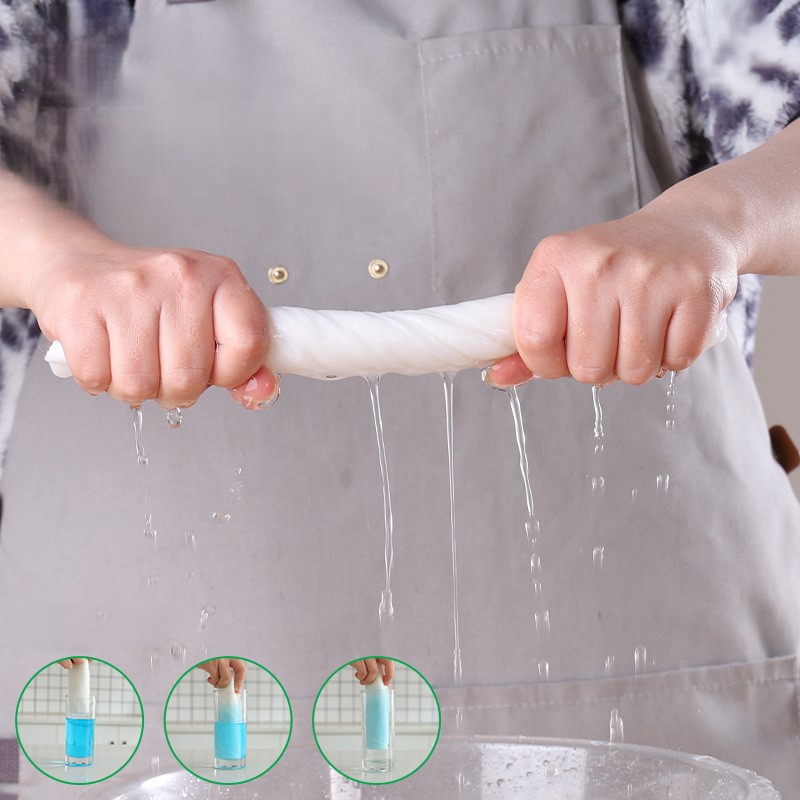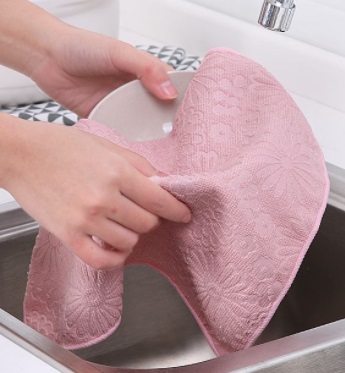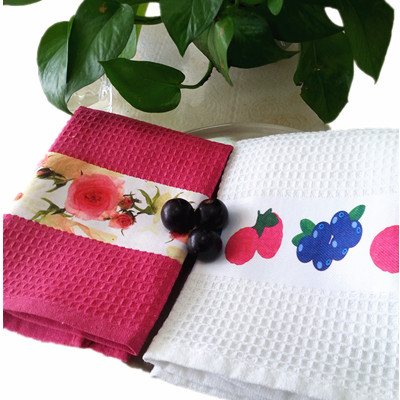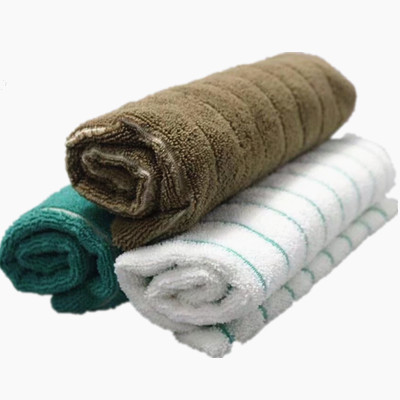🍽️ Kitchen Towels at a Glance
| Material | Absorbency | Drying Speed | Durability | Best For | Price Range |
|---|---|---|---|---|---|
| Cotton | 4-5x weight | 2-4 hours | 200-300 washes | General use, drying dishes | $3-$12 |
| Linen | 3-4x weight | 1-2 hours | 300-500 washes | Tea towels, polishing glassware | $8-$20 |
| Microfiber | 6-7x weight | 30-60 minutes | 500+ washes | Quick drying, counters, travel | $4-$15 |
| Flour Sack | 5-6x weight | 1-2 hours | 300-400 washes | Baking, delicate tasks, straining | $2-$8 |
| Cotton Blend | 4-5x weight | 1-3 hours | 250-350 washes | Budget-friendly, everyday use | $2-$10 |
📊 Kitchen Towel Market Snapshot 2025
Sources: Grand View Research, Textile World, Global Market Insights 2025
Are you tired of kitchen towels that leave lint on your dishes? Looking for towels that actually dry quickly and last? Then you’re in the right place. In this complete guide, we’ll show you everything about choosing the perfect kitchen towels for your home or business.
Whether you’re outfitting a professional restaurant kitchen or simply want better towels for home cooking, understanding quality makes all the difference. Moreover, we’ll explain which materials work best for different tasks. Additionally, you’ll learn how to spot high-quality towels. Furthermore, we’ll share expert tips from professional chefs and manufacturers with decades of experience.
What Are Kitchen Towels and Why They Matter
First, let’s start with the basics. Kitchen towels are specialized textile products designed for various cooking and cleaning tasks. Unlike decorative towels or bath towels, kitchen towels must handle demanding daily use. Therefore, they’re engineered for specific purposes like drying dishes, wiping counters, and handling hot cookware.
Quick Answer: What makes a premium kitchen towel?
- ✓ High absorbency (4-7x water weight)
- ✓ Quick-drying (under 2 hours)
- ✓ Durable (300+ wash cycles)
- ✓ Lint-free performance
- ✓ Colorfastness
- ✓ Food-safe certifications
Why Kitchen Towels Matter for Hygiene and Safety
Moreover, kitchen towels play a crucial role in kitchen hygiene. According to FDA food safety guidelines, proper kitchen textile hygiene prevents cross-contamination. Therefore, quality towels that dry quickly reduce bacterial growth. Additionally, they help maintain cleanliness standards in both home and commercial kitchens.
Furthermore, the right kitchen towel protects your hands from hot pots and pans. Many people use towels as pot holders when oven mitts aren’t handy. Consequently, thick, heat-resistant materials become important. However, not all towels provide adequate protection. Therefore, understanding material properties is essential for safety.
The Difference Quality Makes
Additionally, high-quality kitchen towels save money long-term. Cheap towels wear out quickly, requiring frequent replacement. In contrast, premium towels from manufacturers like Favor Houseware last years with proper care. Moreover, they maintain performance through hundreds of wash cycles. Therefore, the initial investment pays off over time.
“In professional kitchens, we replace kitchen towels every 6-12 months. Quality towels last the full year, while cheap ones fail in 2-3 months. The math is simple—buy quality once instead of cheap ones three times.” – National Restaurant Association

Premium quality kitchen towels with superior absorbency and durability

Microfiber dish towels perfect for streak-free drying and quick cleaning

Colorfast yarn-dyed kitchen towels that maintain vibrancy wash after wash
Key Types of Kitchen Towels (Cotton, Linen, Microfiber & Blends)
Understanding different kitchen towel types helps you choose the right option. Each type serves specific purposes and offers unique advantages. Let’s explore the main categories in detail.
Cotton Kitchen Towels
First, cotton remains the most popular material for kitchen towels. Cotton is a natural fiber that’s soft, absorbent, and affordable. Moreover, 100% cotton towels absorb approximately 4-5 times their weight in water. Therefore, they work excellently for general dish drying and hand wiping.
Additionally, cotton towels come in various weaves. Terry cloth provides extra absorbency with its looped surface. Meanwhile, flat-weave cotton offers a smoother texture for polishing. Furthermore, cotton towels improve with age—they become softer and more absorbent after several washes.
However, cotton has drawbacks. It takes 2-4 hours to air dry completely. Consequently, damp towels can develop odors if not dried properly. Moreover, cotton towels may shrink 3-5% after the first wash. Therefore, manufacturers often pre-shrink quality cotton towels during production.
Linen Tea Towels
Next, linen kitchen towels offer premium performance. Linen comes from flax plants and provides excellent durability. Moreover, linen towels dry faster than cotton—typically in 1-2 hours. Additionally, linen naturally resists bacteria and mildew. Therefore, it stays fresher between washes.
Furthermore, linen towels excel at polishing glassware and silverware. The smooth texture leaves no lint or streaks. Consequently, professional chefs prefer linen for presenting dishes. However, linen costs more than cotton initially. Moreover, it feels stiffer when new but softens beautifully with use.
Microfiber Dish Towels
Additionally, microfiber kitchen towels represent modern innovation. These synthetic towels absorb 6-7 times their weight in water—more than any natural fiber. Moreover, they dry in just 30-60 minutes. Consequently, they prevent odor development effectively.
Furthermore, microfiber towels are completely lint-free. This makes them perfect for drying glassware and polished surfaces. Additionally, they’re incredibly durable, lasting 500+ wash cycles. Professional manufacturers like Favor Houseware specialize in premium microfiber products with OEKO-TEX 100 certification.
However, microfiber shouldn’t be used with fabric softener. The softener coats fibers and reduces absorbency. Moreover, avoid high heat when drying microfiber towels. Therefore, follow care instructions carefully to maintain performance.
Flour Sack Towels (The Difference Explained)
Moreover, flour sack towels deserve special mention. Originally used for packaging flour, these thin cotton towels offer unique benefits. First, they’re extremely lint-free despite being cotton. Therefore, they work perfectly for drying delicate glassware and polishing surfaces.
Additionally, flour sack towels are highly versatile. You can use them for:
- Drying dishes without lint
- Covering rising bread dough
- Straining liquids and making cheese
- Wrapping fresh herbs for storage
- Polishing stainless steel appliances
Furthermore, flour sack towels are budget-friendly. They typically cost $2-$8 each. Moreover, they dry quickly (1-2 hours) and take up minimal storage space. Consequently, many home cooks keep a dozen on hand.
Cotton-Blend Towels
Finally, cotton-blend kitchen towels combine materials for balanced performance. Common blends include cotton-polyester (80/20 or 70/30 ratios). These blends offer several advantages:
- Better wrinkle resistance than pure cotton
- Faster drying (1-3 hours)
- Lower cost than pure linen
- Good absorbency (4-5x weight)
- Reduced shrinkage
Therefore, blends work well for everyday kitchen use. Moreover, they balance performance with affordability. Consequently, many restaurants choose blends for high-volume use.
Type Comparison Table
| Type | Material | Key Strength | Best Use | Lifespan | Care Level |
|---|---|---|---|---|---|
| Terry Cotton | 100% cotton loops | Maximum absorbency | Drying dishes, spills | 200-300 washes | Easy |
| Flat Cotton | 100% cotton weave | Smooth, lint-free | Polishing, general use | 250-350 washes | Easy |
| Linen | Flax fiber | Quick-dry, durable | Tea towels, glassware | 300-500 washes | Moderate |
| Microfiber | Polyester/polyamide | Super absorbent | All purposes, travel | 500+ washes | Easy (no softener) |
| Flour Sack | Thin cotton | Lint-free, versatile | Delicate tasks, baking | 300-400 washes | Easy |
| Cotton-Poly Blend | 70-80% cotton mix | Balanced performance | Everyday kitchen use | 250-350 washes | Easy |
Materials and Weave: How Texture Impacts Absorbency and Durability
Beyond basic material types, weave patterns significantly affect kitchen towel performance. Understanding these technical details helps you select towels that match your needs. Let’s explore how texture impacts functionality.
Common Weave Patterns Explained
Plain Weave (Flat Weave)
First, plain weave is the simplest pattern. Threads interlace in an over-under pattern. This creates a smooth, flat surface with minimal texture. Moreover, plain weave towels are lint-free and excellent for polishing. Additionally, they’re typically thinner and dry faster. Therefore, they work perfectly for glassware and stainless steel.
Terry Cloth (Loop Weave)
Next, terry cloth features small loops on one or both sides. These loops dramatically increase surface area. Consequently, terry towels absorb much more water than flat weaves. Moreover, the plush texture feels soft and comfortable. However, terry cloth can leave lint on dishes. Therefore, it’s better for general drying rather than polishing.
Waffle Weave
Additionally, waffle weave creates a textured grid pattern. This honeycomb structure traps water exceptionally well. Moreover, waffle weave towels dry quickly despite high absorbency. According to Textile World research, waffle weave provides the best balance of absorbency and drying speed. Furthermore, this weave is popular in professional kitchens.

Waffle weave kitchen towels with superior water absorption and quick-dry properties

Soft terry cloth kitchen towels perfect for maximum absorbency

Smooth flat weave towels ideal for lint-free drying and polishing
Thread Count and Density
Furthermore, thread count affects kitchen towel quality. Thread count measures how many threads per square inch. Higher thread counts generally mean softer, more durable towels. However, extremely high thread counts aren’t necessary for kitchen towels. A range of 200-400 works well for most purposes.
Moreover, thread count alone doesn’t determine quality. Fiber quality and weave pattern matter more. Therefore, a 250-thread-count towel with quality cotton outperforms a 400-thread-count towel with cheap fibers. Consequently, reputable manufacturers like Favor Houseware focus on overall construction quality rather than just thread count numbers.
How Weave Affects Performance
| Weave Type | Absorbency | Drying Speed | Lint Production | Best For |
|---|---|---|---|---|
| Plain/Flat | Good (3-4x) | Very Fast (1-2 hrs) | Very Low | Polishing, glassware, counters |
| Terry Cloth | Excellent (5-6x) | Slow (3-4 hrs) | Moderate | Dish drying, spills, general use |
| Waffle | Very Good (4-5x) | Fast (1-2 hrs) | Low | All-purpose, professional kitchens |
| Herringbone | Good (3-4x) | Fast (1-2 hrs) | Very Low | Decorative, light tasks |
| Huckaback | Very Good (4-5x) | Fast (1-2 hrs) | Low | Tea towels, glass drying |
GSM Weight Explained
Additionally, GSM (grams per square meter) indicates towel thickness and weight. Understanding GSM helps you choose appropriate towels:
- 150-250 GSM: Lightweight, fast-drying, good for polishing and light tasks
- 250-350 GSM: Medium weight, balanced performance for general kitchen use
- 350-500 GSM: Heavy weight, maximum absorbency for serious dish drying
- 500+ GSM: Extra heavy, typically terry cloth for maximum water holding
Therefore, choose GSM based on your primary use. Moreover, lighter towels dry faster but absorb less. Meanwhile, heavier towels absorb more but take longer to dry. Consequently, having a variety of weights serves different needs effectively.
Performance Metrics to Consider: Absorbency, Drying Speed & Durability
When selecting kitchen towels, understanding performance metrics helps you make informed decisions. Let’s examine the key measurements that indicate quality and functionality.
Absorbency Rates (g/g Measurements)
First, absorbency measures how much water a towel can hold relative to its dry weight. This is expressed as a ratio (grams of water per gram of towel weight). Here’s how different materials compare:
| Material | Absorbency Rate | Example | Performance Rating |
|---|---|---|---|
| Microfiber | 6-7x weight | 100g towel holds 600-700ml water | ⭐⭐⭐⭐⭐ Excellent |
| Flour Sack Cotton | 5-6x weight | 100g towel holds 500-600ml water | ⭐⭐ |